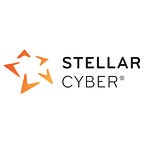When Doing Nothing is Too Expensive
Resource strapped companies trying to put together a comprehensive cybersecurity defense in today’s environment have three key challenges: there’s not enough time, there aren’t enough people, and there isn’t enough money. Most companies look at their monthly spend on security tools, training and headcount and the typical reaction (after the groaning) is to stand pat, limping along with barely adequate security. In extreme cases, they actually want to reduce the security budget because at least that will ease one of their three challenges.
But when you look at monthly spend and weigh it against the risk of doing nothing in an age when cyberattacks are more numerous and complex every week, it puts you in a real bind about what to do. Doing nothing means you put your entire business in danger because a serious attack can take you out of business. So, you can either continue to watch your analysts drown in a sea of largely meaningless alerts, or you can choose a different path.
Open XDR is the key to addressing all three cybersecurity challenges. It delivers 360-degree visibility and high-fidelity automated analysis, which save time and make people more productive, and it does these at a lower cost than what you’re paying today. Let’s look at each challenge and see how Open XDR can help.
Time:
Security analysts have too little time because they’re trying to do too much. Security is a Big Data problem: if you’re properly instrumenting your network, servers, endpoints, applications and cloud for security anomalies, your analysts are seeing hundreds or thousands of alerts every day. Between dealing with these and trying to manually correlate what may be related alerts to spot complex attacks, analysts are largely treading water.
Open XDR alleviates this problem because it first normalizes unstructured data to structured data and then enriches it with contextual information, then uses AI and ML to do a lot of the low-level alert triage automatically. Stellar Cyber’s platform baselines your environment in a matter of days to learn what’s “normal” for your unique security infrastructure. It then automatically ignores meaningless alerts, focuses on the actionable ones, and uses AI and Graph ML to automatically group related alerts into fewer, higher-level incidents that spell out exactly where and how an attack is happening.
The result of Open XDR is that analysts suddenly have far more time to devote to solving real security problems. Our platform typically reduces MTTD by 8X and MTTR by 20x.
People:
At $150–200K per person, highly trained security analysts are costly and scarce. Security chiefs frequently bemoan headcount costs, while the analysts on the team are frustrated and overworked. Every organization wants to have happy and productive employees, but trying to gain full security visibility with a single security tool like SIEM or NDR alone is like asking your analysts to visit hell so they can enjoy the weather.
Open XDR makes analysts much happier because it makes them meaningfully productive. Instead of hopping from security tool to security tool and chasing alerts all day long, they can use a single interface to see the whole kill chain and, more importantly, take effective action against attacks as they occur.
Money:
Cybersecurity is expensive, but it doesn’t have to be as expensive as it is now. With Open XDR, you get better security visibility and response for less. Why? Simply look at training as an example: if you have four different tools, you could be paying four different vendors $5,000 each to train four analysts. With Open XDR’s tool integration, all data flows up to the central console, so you only have to train on one tool. Along with that, you can shop for less expensive analysts because the console itself tells them exactly what to do to stop attacks. Our customers report that they can train new analysts on our platform in a matter of days, not weeks, so training time and costs are much lower.
Naturally, we’re a bit biased about solving the three key challenges security leaders face, but we think we have a right to be that way. XDR is a hot topic in security, and a lot of vendors take XDR and distort it, so it matches what they are delivering: for example, EDR vendors say EDR is the gold standard in XDR detection, while SIEM vendors say it’s the core of XDR. But our customers tell us that they want a vendor-agnostic solution that gives them complete visibility with one throat to choke when something goes wrong, and they want one console with AI at work to alleviate training time and make their analysts more productive.
Solving the problems of time, people and money are the reason we at Stellar Cyber get up and go to work each day. So, when you can’t afford to do nothing about security, give us a shout.
